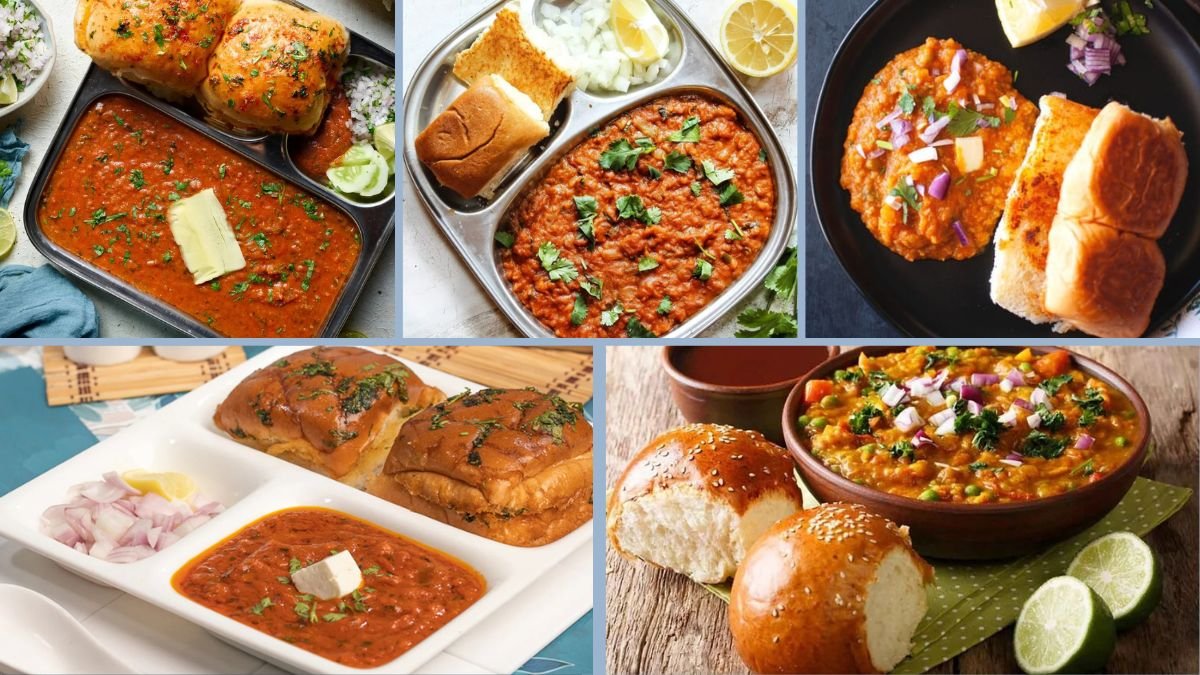Pav Bhaji, the quintessential Mumbai street food, is much more than a spicy mashed vegetable curry served with butter-toasted bread rolls. It’s a wholesome, flavor-packed, and crowd-pleasing dish that’s as popular in Indian homes as it is on street corners. What makes Pav Bhaji truly special is its versatility — it’s easily customizable, quick to make, and most importantly, packed with nutrition when made with loads of vegetables.
This guide will take you through a 7-step process to prepare Pav Bhaji at home using a variety of fresh vegetables — 100% vegetarian, healthy, and absolutely delicious.
Why Pav Bhaji?
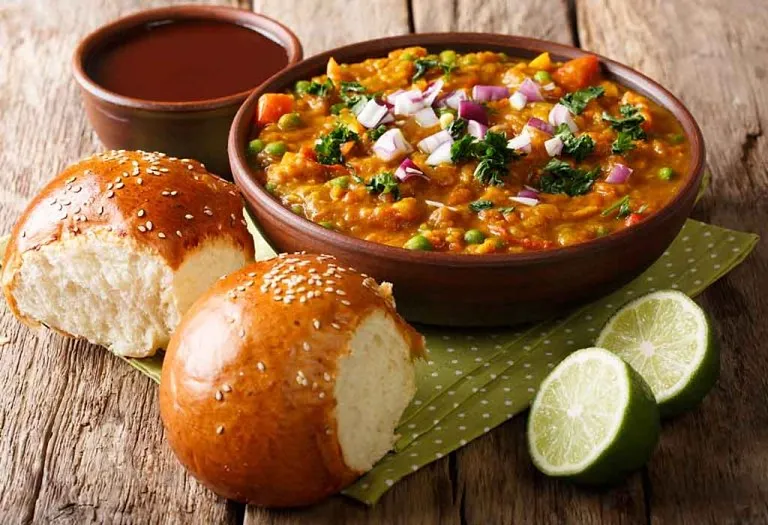
Originally created in the 1850s as a quick lunch for Mumbai’s textile mill workers, Pav Bhaji has evolved into a comfort food staple enjoyed across India. The bhaji (vegetable mix) is a medley of boiled vegetables mashed and simmered in a rich blend of spices and butter, while the pav (bread roll) is toasted until golden and crispy.
What sets this recipe apart is the generous use of vegetables — transforming this street food into a hearty, nutritious meal suitable for all age groups.
Ingredients: What You’ll Need
For the Bhaji (Vegetable Curry):
- 2 tablespoons butter (plus more for toasting pav)
- 1 tablespoon oil
- 1 teaspoon cumin seeds
- 1 medium onion, finely chopped
- 1 tablespoon ginger-garlic paste
- 2 medium tomatoes, finely chopped
- 2 medium potatoes, peeled and diced
- 1 cup cauliflower florets
- 1 medium carrot, chopped
- ½ cup green peas (fresh or frozen)
- ½ cup capsicum (bell pepper), chopped
- Salt to taste
- 1½ teaspoons Pav Bhaji Masala (store-bought or homemade)
- ½ teaspoon turmeric powder
- 1 teaspoon red chili powder (adjust to taste)
- 1½ to 2 cups water
- Juice of ½ lemon
- Fresh coriander leaves for garnish
For the Pav (Bread Rolls):
- 8 pav buns (Indian dinner rolls)
- 2 tablespoons butter
- A pinch of Pav Bhaji Masala for toasting
Optional Add-ins: Beetroot for color, beans for protein, or spinach for added nutrition.
Step-by-Step Recipe for Nutritious Pav Bhaji
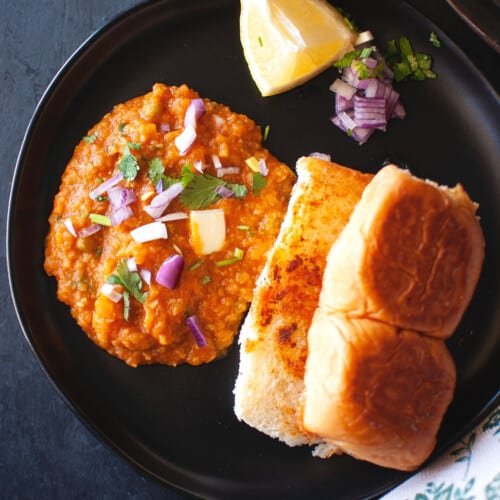
Step 1: Prep and Boil the Vegetables
The essence of a good Pav Bhaji lies in its vegetables. Boiling them beforehand ensures a creamy, well-mashed texture.
- In a pressure cooker or large pot, add diced potatoes, cauliflower florets, carrots, and green peas.
- Add enough water to cover the vegetables and a pinch of salt.
- Pressure cook for 2 whistles (or boil for 15–20 minutes until soft).
- Once done, drain excess water and mash the vegetables coarsely using a potato masher or the back of a ladle.
Pro Tip: Don’t mash completely — a slightly chunky texture adds body to the bhaji.
Step 2: Sauté Onions and Tomatoes
This is where the flavor begins to build.
- Heat oil and 2 tablespoons of butter in a large pan or tawa.
- Add cumin seeds. Once they sizzle, add chopped onions.
- Sauté until golden brown, then add ginger-garlic paste.
- Cook for a minute until the raw smell disappears.
- Add chopped tomatoes and cook until they turn soft and mushy.
Step 3: Add Spices and Bell Pepper
The aromatic spices give Pav Bhaji its distinct taste.
- Add turmeric, red chili powder, and Pav Bhaji Masala.
- Stir and cook the spices for a minute.
- Add chopped capsicum and cook for another 2–3 minutes until slightly softened.
Note: Capsicum adds a mild crunch and enhances the flavor profile. Do not overcook.
Step 4: Mix in the Mashed Vegetables
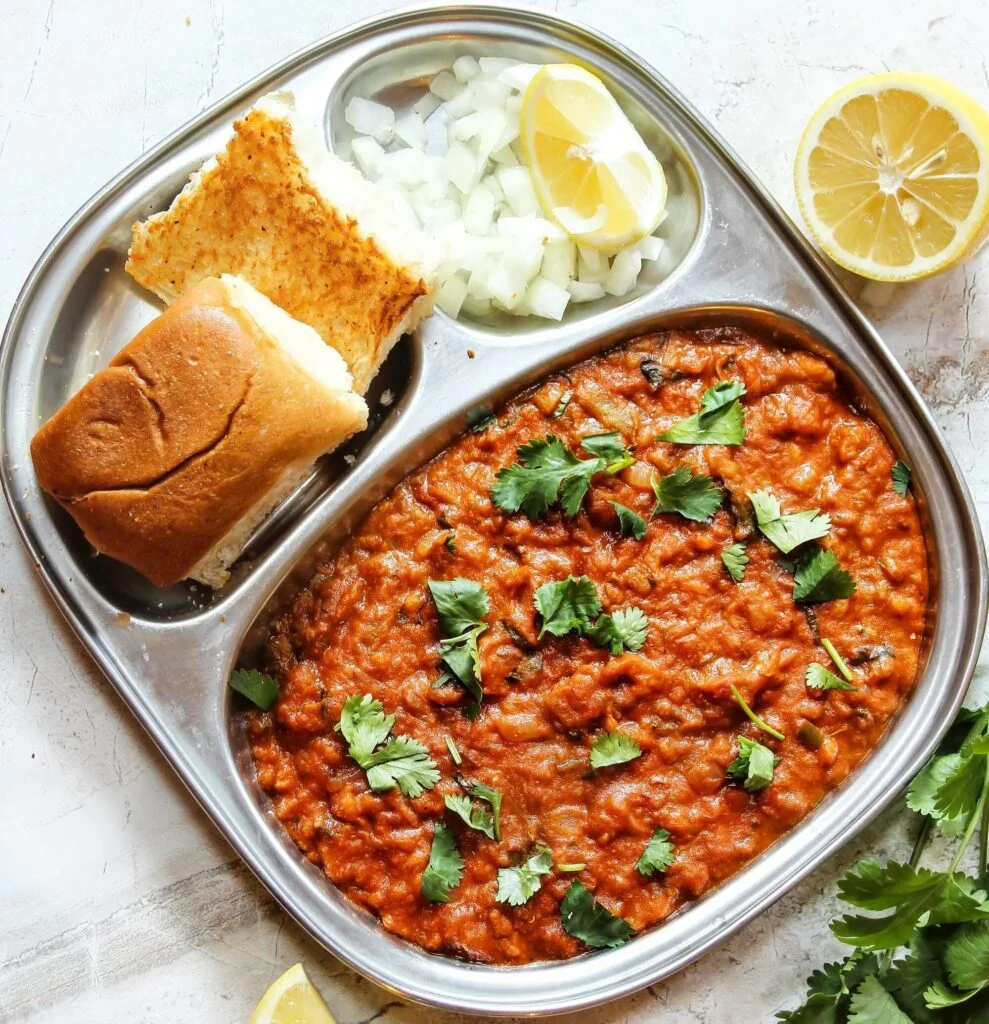
Now comes the heart of the dish — combining all the veggies.
- Add the mashed vegetables to the pan.
- Mix thoroughly with the onion-tomato-spice mixture.
- Add 1½ to 2 cups of water gradually to adjust the consistency.
- Let the bhaji simmer on medium-low heat for 10–15 minutes, stirring occasionally.
The longer it simmers, the better the flavor. Mash further if needed during cooking.
Step 5: Balance the Flavor
Final touches that make all the difference.
- Add salt and lemon juice to balance the spice and richness.
- Mix in a little more butter for that classic street-style richness.
- Sprinkle freshly chopped coriander leaves.
Optional: Add a knob of butter before serving for extra indulgence.
Step 6: Toast the Pav
No Pav Bhaji is complete without butter-toasted pav buns.
- Slice each pav horizontally (like a burger bun).
- On a tawa or pan, melt a bit of butter.
- Sprinkle a pinch of Pav Bhaji Masala on the butter.
- Toast the pav halves until golden brown and crispy on both sides.
Healthy tip: Use multigrain or whole wheat buns if you want a more nutritious alternative.
Step 7: Serve Hot and Fresh
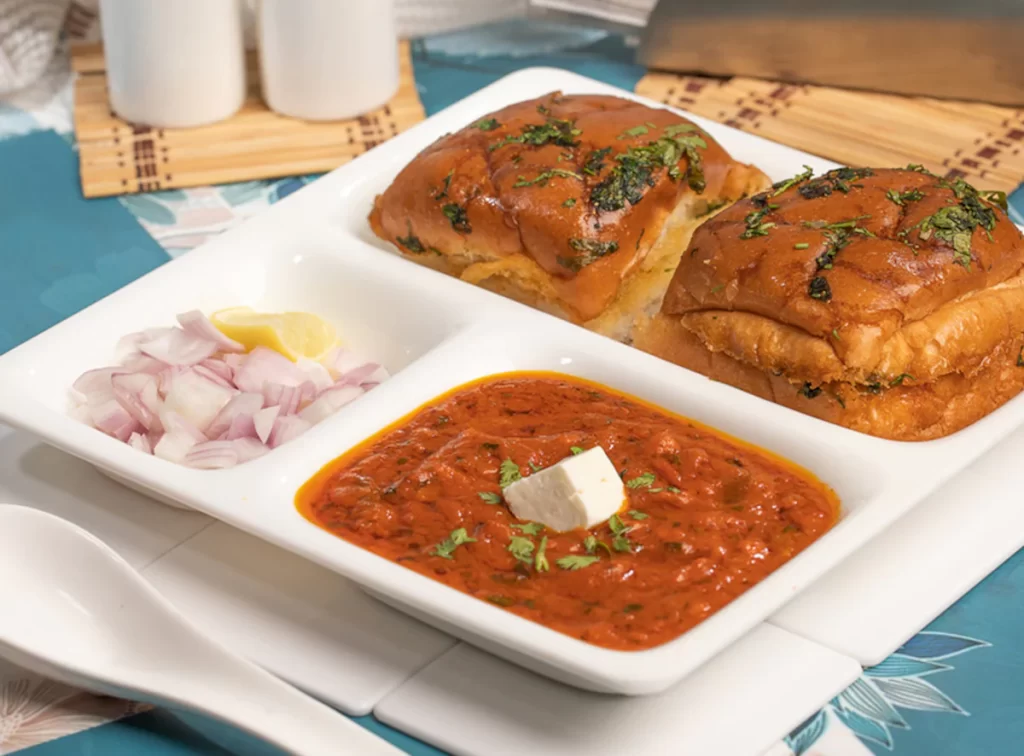
Plate the bhaji with a dollop of butter on top. Serve hot with:
- Toasted pav
- Finely chopped onions
- Lemon wedges
- Fresh coriander garnish
Serving Suggestion: Add a side of cucumber or carrot salad for a crunchy, cooling contrast.
Why This Version is Healthier
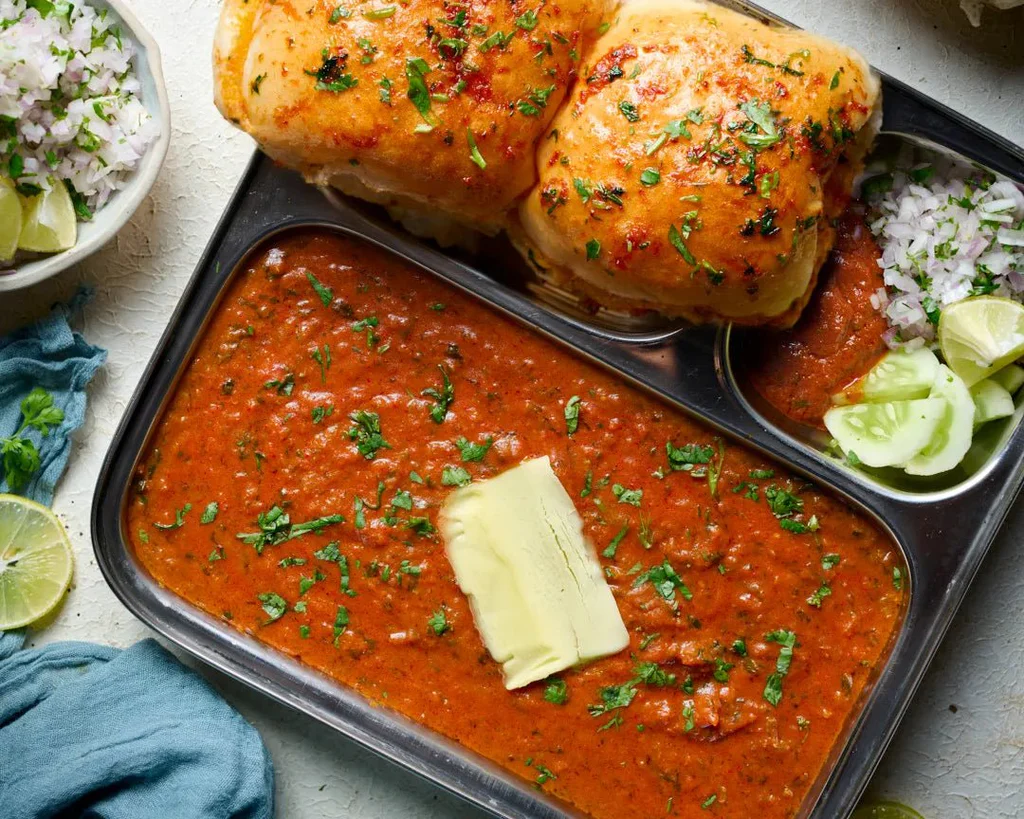
- Vegetable-rich: Packed with fiber, vitamins, and minerals from a variety of vegetables.
- Reduced oil: Uses just enough oil and butter to retain taste without going overboard.
- Homemade goodness: No food color, preservatives, or processed ingredients.
For an even healthier twist, try these alternatives:
- Use olive oil or ghee instead of butter.
- Add pureed spinach or beetroot to the bhaji for color and nutrients.
- Serve with steamed whole wheat bread or brown rice.
Common Mistakes to Avoid
- Over-mashing the vegetables: A completely smooth bhaji lacks texture.
- Skipping bell peppers: They’re essential for authentic flavor.
- Too much water: Bhaji should be thick and luscious, not watery.
- Using stale pav: Fresh pav ensures the best texture after toasting.
- Under-seasoning: Pav Bhaji is bold — don’t shy away from masala.
Nutritional Benefits
Pav Bhaji, especially when made with lots of vegetables, can be a balanced meal:
- Potatoes provide energy and fiber.
- Cauliflower and carrots offer vitamins C and A.
- Green peas are rich in plant-based protein.
- Tomatoes and capsicum contribute antioxidants and flavor.
When served with moderate amounts of butter and whole grain pav, it becomes a satisfying, nourishing dish suitable for lunch or dinner.
Conclusion
Pav Bhaji is more than just a street food — it’s a flavorful, wholesome meal that can easily be made healthier at home by adding a generous mix of vegetables. This 7-step recipe helps you recreate the iconic taste of Mumbai’s streets in your own kitchen while enhancing the nutritional value of the dish.
Whether you’re cooking for a weekend treat or preparing a quick weeknight dinner, Pav Bhaji is guaranteed to please every palate. So roll up your sleeves, chop those veggies, and bring the irresistible aroma of buttery bhaji and toasted pav into your home.
